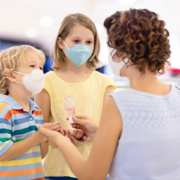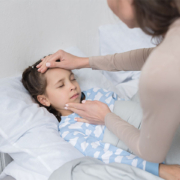
Childhood obesity is a growing concern in the United States, with nearly one in five children and adolescents affected, according to the Centers for Disease Control and Prevention (CDC).

Every day, teens are bombarded by alarms, alerts, and the endless scroll, making it harder to concentrate, even for simple tasks.

When asked if he ever sees kids using screens to avoid stress or emotions, Dr. Matt Allen has an emphatic answer.

In exam rooms across the country, pediatricians are seeing a troubling trend: a rising tide of anxiety in children and teens. While the COVID-19 pandemic amplified mental health challenges for youth, many experts say the spike began long before lockdowns and masks—around the time smartphones became a fixture in daily life.

It’s time that parents wake up to the fact that sleep deprivation among youth is largely triggered by increased dependence on smartphones and social media.

Picture a group of teenagers gathered in a living room—yet each sits silently, eyes locked on a screen, thumbs scrolling in unison. They’re together, but not truly with each other.

According to a Pew Research Center report, up to 95 percent of teens aged 13–17 confirm using a social media platform. Fully 35 percent of teens say they are using at least one of them “almost constantly.” In today’s digital world

Teen anxiety and depression are skyrocketing—and the time spent on smartphones and social media appears to be igniting the fuse.

Article at a Glance

Article at a Glance